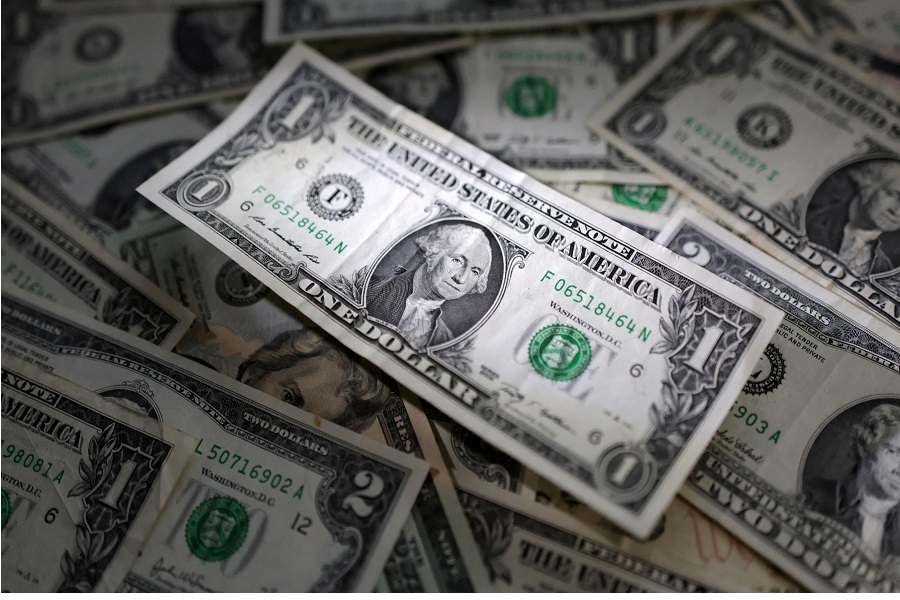Crudeoil trading range for the day is 5615-5879 - Kedia Advisory

Gold
Gold prices settled higher by 0.28% at ?71,628, driven by expectations surrounding U.S. inflation data and the Federal Reserve's interest rate decisions. While U.S. employment growth for August came in below expectations, the jobless rate dropping to 4.2% suggested stability in the labor market, reducing the likelihood of aggressive rate cuts. Fed Governor Christopher Waller expressed support for back-to-back or larger cuts if warranted by data, with a 75% chance of a 25-basis point cut and a 25% chance of a 50 bp reduction expected at the upcoming Fed meeting. On the global demand front, the People's Bank of China paused gold purchases for the fourth consecutive month, signaling weaker demand from the region. In India, rising gold prices pushed discounts to a seven-week high, with domestic dealers offering up to $13 an ounce below official prices. Indian gold demand, which fell by 5% in the June quarter, is set to recover in the second half of 2024, fueled by a reduction in import taxes and a strong monsoon. Meanwhile, Chinese and Hong Kong demand remains muted, with discounts ranging between $0.50 and $8. Singapore and Japan saw modest premiums, reflecting regional demand differences. Technically, the gold market saw short covering, with a drop in open interest by 3.29% to 14,542 as prices increased by ?202. Gold is supported at ?71,270, with potential declines testing ?70,910, while resistance is seen at ?71,845, with a move above potentially pushing prices to ?72,060.
Trading Ideas:
* Gold trading range for the day is 70910-72060.
* Gold remained in range as the dollar ticked higher, while investors looked towards this week's U.S. inflation data.
* U.S. employment increased less than expected in August
* Fed Governor Christopher Waller said he could support back-to-back cuts, or bigger cuts, if the data suggests the need.
Silver
Silver prices rose by 1.07% to ?83,645, with investors focusing on the U.S. inflation data and its potential impact on the Federal Reserve's rate cut decision. The U.S. economy added 142,000 jobs in August, falling short of the expected 160,000, and revisions to the previous month’s data further dampened optimism. Pessimism in labor market reports, including downward revisions in the ADP, Challenger, and JOLTS data, added to the growing expectation of rate cuts. Fed officials, including San Francisco's Mary Daly and Chicago's Austan Goolsbee, have signaled that a rate reduction is likely due to slowing economic growth and falling inflation. This sentiment aligns with the Institute for Supply Management's Services PMI, which marginally rose to 51.5 in August, while the Employment Index declined to 50.2, reflecting a slowing labor market. India's silver imports are set to double this year, driven by demand from the solar and electronics sectors and investor interest. The country imported 3,625 metric tons in 2023, and first-half 2024 imports surged to 4,554 tons from just 560 tons the previous year. Rising imports highlight the metal’s growing industrial and investment demand, adding upward pressure on global silver prices, which are nearing a decade high. Technically, the silver market is experiencing short covering, with open interest down by 3.08% to 31,696, while prices rose by ?888. Silver finds support at ?82,680, with potential declines testing ?81,710. Resistance is now seen at ?84,190, with a break above potentially pushing prices to ?84,730.
Trading Ideas:
* Silver trading range for the day is 81710-84730.
* Silver gains as investors looked towards U.S. inflation data to gauge the size of an expected Fed rate cut.
* Fed’s Daly said that the US central bank must calibrate policy to the evolving economy and cut policy rates
* Fed’s Goolsbee said that the longer-run trend of the labor market and inflation data justify easing interest-rate policy soon.
Crude oil
Crude oil prices rose by 1.26%, settling at ?5,776 amid concerns over potential production disruptions caused by an approaching hurricane in the U.S. Gulf Coast. Additionally, Libya's National Oil Corporation (NOC) declared force majeure on several crude cargoes from the Es Sider port due to a political standoff over oil revenue, further curtailing production. OPEC+ recently decided to delay a planned output increase of 180,000 barrels per day, responding to falling crude prices. Meanwhile, Chinese refiners are purchasing 16 million barrels of oil monthly to replenish the nation’s Strategic Petroleum Reserve at low prices, supporting the demand outlook. However, Bank of America Global Research downgraded its 2025 Brent crude price forecast to $75 per barrel due to weaker demand, especially from China, and increased inventories. Analysts expect global oil demand growth of just 1.1 million barrels per day in 2025, while non-OPEC oil supply is projected to rise by 1.6 million barrels per day, limiting OPEC+'s ability to raise output. Additionally, Citi warned that failure to cut production could push oil prices down to $60 per barrel by 2025. U.S. crude oil inventories fell by 6.9 million barrels in late August, significantly exceeding the expected 1.1 million barrel draw. Stocks at the Cushing delivery hub dropped by 1.1 million barrels, while distillate fuel inventories also fell unexpectedly. Technically, crude oil is undergoing short covering, with open interest dropping by 14.57%. Crude oil is finding support at ?5,695, with a potential test at ?5,615. On the resistance side, levels are likely at ?5,827, with a further move up to ?5,879 if momentum persists.
Trading Ideas:
* Crudeoil trading range for the day is 5615-5879.
* Crude oil gains amid risk of production disruptions from a potential hurricane approaching the U.S. Gulf Coast
* Chinese refiners are likely buying a combined 16 million barrels of oil a month to replenish the SPR at current low prices.
* BOFA downgraded its 2025 Brent price forecast by $5 to $75 per barrel, citing weaker demand, particularly from China
Natural gas
Natural gas prices settled down by -4.5% at 182.4 due to expectations that a storm forecasted to hit Louisiana will reduce demand by causing power outages and lowering gas flows to liquefied natural gas (LNG) export plants. This decline occurred despite forecasts for higher demand next week and increased LNG feedgas flows in early September. Another contributing factor to the drop in prices is the oversupply of gas in storage, a lingering effect of a mild winter. U.S. gas storage levels are about 10% higher than the norm for this time of year, although injections have been smaller than usual in 16 of the past 17 weeks. The U.S. National Hurricane Center (NHC) has projected that a hurricane will form in the Gulf of Mexico, potentially impacting three major LNG export plants in Louisiana. Gas production in the Lower 48 U.S. states has fallen to an average of 102.4 billion cubic feet per day (bcfd) in September, down from 103.2 bcfd in August. Meteorologists expect near-normal weather through mid-September, followed by warmer-than-usual conditions. The U.S. Energy Information Administration (EIA) revised its forecast for 2024 natural gas output downward to 103.3 bcfd, slightly lower than its previous estimate of 103.5 bcfd. Gas consumption is expected to average 89.8 bcfd this year, up from prior forecasts. Technically, the market is under fresh selling pressure, with a 20.23% increase in open interest, settling at 41,649 contracts. Natural gas has support at 179.4, with a test of 176.5 possible. Resistance is now seen at 187.6, and a move above this level could push prices toward 192.9.
Trading Ideas:
* Naturalgas trading range for the day is 176.5-192.9.
* Natural gas slid on expectations a storm forecast to hit Louisiana later this week will cut demand by causing power outages.
* Another factor weighed on prices was the tremendous oversupply of gas left in storage after a mild winter.
* That price decline came despite forecast for more demand next week than previously expected.
Copper
Copper prices increased by 1.14% to ?790.85, driven by short covering after a period of weakness due to disappointing U.S. manufacturing and labor market data, which heightened recession fears. The outlook for copper demand is subdued, influenced by recent downgrades in forecasts. Australian mining giant BHP Group revised its projection for China’s copper demand downwards, citing concerns over the country’s economic recovery. Support for copper prices came from expectations that the U.S. Federal Reserve might start cutting interest rates this month, which could benefit commodity markets. Despite these positive signals, Goldman Sachs lowered its copper price forecast for 2025 to $10,100 per ton from a previous estimate of $15,000. The Yangshan premium, an indicator of China's import demand, rose to $62 per ton from a discount in July, suggesting increased appetite for imports. Additionally, copper inventories in warehouses monitored by the Shanghai Futures Exchange fell 10.9% this week to their lowest level since March. The global refined copper market had a surplus of 95,000 metric tons in June, up from 63,000 tons in May, with a 488,000 metric tons surplus for the first half of the year. China's unwrought copper imports declined 2.9% year-on-year in July, reflecting weak demand, though imports of copper concentrate increased. Technically, the market is seeing short covering with a 7.25% drop in open interest to 11,291 contracts and a ?8.95 increase in prices. Copper is finding support at ?782.4, with potential to test ?774 if this level is breached. Resistance is at ?796.8, with a move above potentially pushing prices to ?802.8.
Trading Ideas:
* Copper trading range for the day is 774-802.8.
* Copper gained on short covering as sentiment took a hit after weak US manufacturing and labor market data.
* Copper inventories in warehouses monitored by the Shanghai Futures Exchange fell 10.9% this week to their lowest since March.
* Goldman Sachs reducing its estimate to an average of $10,100 a ton for 2025, down from a previous estimate of $15,000.
Zinc
Zinc prices rose by 0.73% to ?255.55, driven by short covering after recent declines exacerbated by weaker-than-expected U.S. jobs data, which heightened economic concerns. The rebound was supported by the start of zinc concentrate production at Russia's Ozernoye plant, which had faced delays due to a 2023 fire and U.S. sanctions. The plant aims to reach full capacity of 600,000 tons of zinc concentrate by 2025, processing up to 6 million tons of zinc ore. China's central bank, the People's Bank of China (PBOC), signaled intentions to better align market interest rates with its policy rates, with a focus on enriching the policy toolkit and improving transmission. This comes as global zinc market dynamics are shifting. The global zinc surplus significantly reduced to 8,700 metric tons in June from 44,000 tons in May, with the surplus for the first half of 2024 standing at 228,000 tons, down from 452,000 tons during the same period last year. In July, China's refined zinc production fell to 489,600 metric tons, a decrease of 10.3% month-on-month and 11.15% year-on-year. The cumulative production from January to July was 3.671 million metric tons, down 2.81% year-on-year. Heavy rainfall in Sichuan and unexpected production cuts in other regions contributed to this decline. Technically, zinc is experiencing short covering, with a 6.98% drop in open interest to 2,599 contracts and prices up by ?1.85. Support is at ?253, with a potential test of ?250.3 below this level. Resistance is likely at ?257.8, with a move above potentially pushing prices to ?259.9.
Trading Ideas:
* Zinc trading range for the day is 250.3-259.9.
* Zinc gained on short covering after prices dropped amid weaker-than-expected U.S. jobs data.
* Russian zinc miner Ozernoye started production earlier than expected after a fire destroyed its facilities.
* China's central bank will better guide market interest rates to stay close to its policy rate, an official from the bank said.
Aluminium
Aluminium prices increased by 1.54% to ?220.95, buoyed by the onset of the traditional peak season for demand. Consumption is gradually improving, contributing to a reduction in inventories, which have dropped 22% over the past three months to 877,950 tonnes—the lowest level since May 8. This tightening in inventory suggests a potential turning point for the market. However, upside potential is limited by broader concerns about global economic growth, which continue to pressure industrial metals. China's manufacturing data fell to a six-month low last month, highlighting struggles with order volumes. Despite this, aluminium inventories in Shanghai Futures Exchange warehouses decreased by 1.4% from the previous week. China's aluminium output surged in July to its highest level in over two decades, reaching 3.68 million metric tons—a 6% increase year-on-year. For the first seven months of the year, production totaled 25.19 million tons, reflecting strong output despite recent price declines. Globally, primary aluminium production in July rose by 2.4% year-on-year to 6.194 million metric tons, with China contributing 3.69 million tons of this total. The average daily production globally increased slightly to 199,800 tons. Technically, aluminium is under short covering, with a 6.27% drop in open interest to 3,825 contracts. Prices have risen by ?3.35, finding support at ?218.4; a drop below this level could see a test of ?215.7. Resistance is likely at ?222.5, with a break above potentially pushing prices to ?223.9.
Trading Ideas:
* Aluminium trading range for the day is 215.7-223.9.
* Aluminium gains as demand side is entering the traditional peak season, consumption is gradually recovering.
* However, upside seen limited as concerns about global economic growth kept industrial metals under pressure.
* Aluminium inventories in warehouses monitored by the Shanghai Futures Exchange fell 1.4% from last Friday
Cottoncandy
Cottoncandy prices dropped by 0.85% to ?58,540, tracking weakness in ICE cotton futures due to sluggish demand and improved crop conditions. Cotton acreage for the current kharif season is down by 9% at 110.49 lakh hectares compared to 121.24 lakh hectares in the same period last year. The Cotton Association of India (CAI) estimates the total area at 113 lakh hectares, a drop from 127 lakh hectares in the previous year, as farmers are shifting to other crops due to low yields and high production costs. This season, India's cotton production and consumption are both estimated at 325 lakh bales. The increased exports, especially to Bangladesh, have tightened the balance sheet, with exports rising from 15 lakh bales to 28 lakh bales. Imports are projected at 13 lakh bales, resulting in a stock reduction of 15 lakh bales. As per CAI estimates, the spinning mills have a stock of 25 lakh bales, with ginners holding 15 lakh bales and Cotton Corporation of India having 20 lakh bales. An additional 10 lakh bales are expected in August-September. If the new crop is delayed, cotton supply could tighten further. Global cotton production is projected to fall, mainly due to lower output in the U.S. and India, with global ending stocks reduced by 5 million bales to 77.6 million. Technically, the cotton market is under long liquidation, with open interest dropping by 8.72% to settle at 136 contracts. Prices are supported at ?58,330, with potential downside to ?58,130, while resistance is seen at ?58,720, with a possible move toward ?58,910.
Trading Ideas:
* Cottoncandy trading range for the day is 58130-58910.
* Cotton prices dropped tracking weakness in ICE prices due to slow demand, improved crop conditions.
* CAI predicts acreage to be around 113 lh this year, up from 127 lh in the previous year.
* Global cotton production cut by 2.6 million bales; lower in US, India.
* In the global 2024/25 cotton balance sheet, beginning stocks, production and consumption are increased.
Turmeric
Turmeric prices increased by 1.28% to ?14,194 due to tighter supplies and renewed interest from stockists. Farmers are holding back stocks, anticipating a further price rise, which has also lent support to prices. However, the upside is limited by reports of increased sowing. In key growing regions like Maharashtra, Telangana, Andhra Pradesh, and Erode, turmeric sowing is expected to be 30-35% higher compared to last year. Despite this, production in 2024 is estimated to be around 45-50 lakh bags due to poor weather conditions last year, with a carryover stock of 35-38 lakh bags. The upcoming crop, even with increased sowing, is expected to reach 70-75 lakh bags, while the outstanding stock will be exhausted, leading to tighter availability in 2025. Turmeric exports during April-June 2024 dropped by 19.52%, with 46,497.99 tonnes exported compared to 57,775.26 tonnes in the same period of 2023. In June 2024, exports fell by 14.01% from May, reflecting weak global demand. On the other hand, turmeric imports surged by 485.40% during the same period, indicating increased domestic demand for the spice. Technically, the turmeric market is under short covering, as reflected by a 2.68% drop in open interest to 15,790, while prices rose by ?180. Support is seen at ?13,816, and a break below could lead to testing ?13,440. Resistance is expected at ?14,494, with potential for prices to rise to ?14,796 if momentum continues.
Trading Ideas:
* Turmeric trading range for the day is 13440-14796.
* Turmeric gains amid tighter supplies in the market and emerging buying from stockists.
* Export opportunities are expected to be further complicated due to anticipated volatility in Bangladesh.
* In Indonesia, dry weather has accelerated harvesting, which is currently at peak levels.
* In Nizamabad, a major spot market, the price ended at 14350.7 Rupees dropped by -0.51 percent.
Jeera
Jeera prices fell by 0.99% to ?25,100, pressured by expectations of higher production this season. A significant rise in the sowing area, particularly in Gujarat and Rajasthan, is expected to result in a 30% increase in jeera production, reaching 8.5-9 lakh tonnes. Gujarat's production is projected to hit a record 4.08 lakh tonnes, driven by a 104% increase in sowing area, while Rajasthan’s production is estimated to have surged by 53%. Globally, countries like China, Syria, Turkey, and Afghanistan have also ramped up their cumin production, with China’s output doubling to 55-60 thousand tons, which could weigh further on prices as new supplies enter the market. Despite the higher production outlook, jeera prices remain supported by robust domestic and export demand. During April-June 2024, jeera exports rose by 46.56% compared to the same period in 2023, reflecting strong demand from international markets. However, June 2024 exports saw a 29.12% month-on-month decline from May but were up 60.13% year-on-year. India’s cumin exports, typically around 0.2 million tonnes annually, are expected to recover in 2024 after a 30% drop in 2023. Technically, the jeera market is undergoing long liquidation, with open interest falling by 5.79% to 1,464 as prices dropped by ?250. Jeera has support at ?24,720, and a drop below this level could see prices testing ?24,340. Resistance is expected at ?25,410, and a move above could push prices toward ?25,720.
Trading Ideas:
* Jeera trading range for the day is 24340-25720.
* Jeera dropped as the expectation of higher production weighed on the prices.
* However downside seen limited amid robust domestic and export demand besides tight global supplies.
* Turkey anticipates producing 12-15 thousand tons, while Afghanistan's output could double.
* In Unjha, a major spot market, the price ended at 25469.3 Rupees dropped by -0.12 percent.























